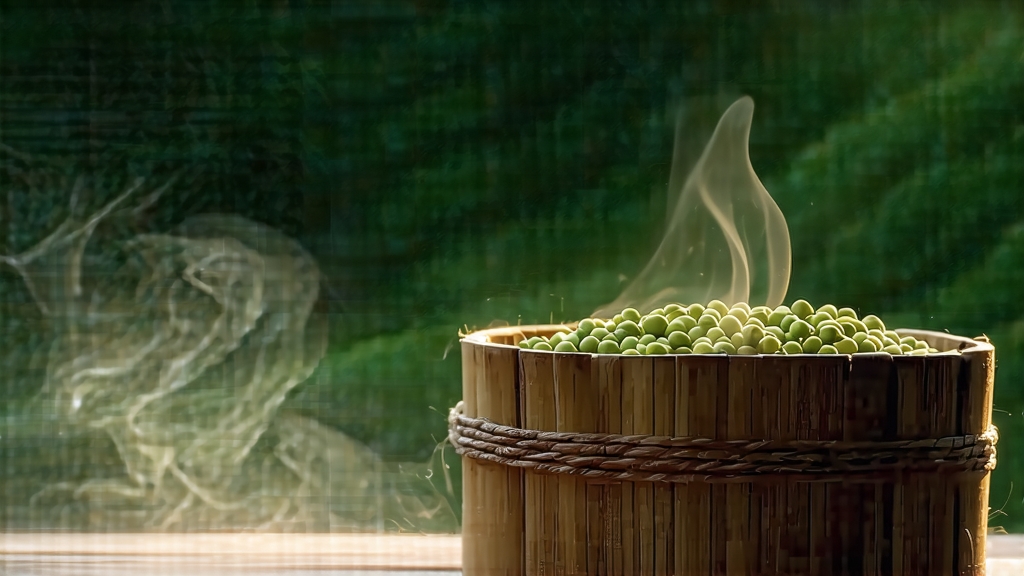
Meng Ding Huang Ya, literally “Yellow Bud from Meng Summit,” is the least-traveled celebrity of China’s six major tea families. While green tea’s jade freshness and pu-erh’s earthy mystique have conquered foreign shelves, this yellow-gold curiosity remains a guarded secret among Sichuan’s cloud-veiled peaks. To understand it is to step into a pocket of dynastic memory where emperors once sent horseback couriers for the first spring bud, and where modern farmers still speak to their tea trees as elders rather than crops.
History: from altar to emperor
The story begins on Meng Ding Mountain, a 1,450 m granite spine rising above the fertile Chengdu Plain. Buddhist monks planted the first tea gardens here during the Western Han dynasty (53 BCE), intending the leaf as an offering to the mountain spirit. By the Tang dynasty (618-907 CE) the buds had migrated from altar to palace. The Kaiyuan Emperor declared Meng Ding tea one of the thirteen “tributes of the realm,” and a relay of fast horses carried the harvest 1,800 km to Chang’an within seven days. Song dynasty chroniclers noted that the leaf arrived “still warm from mountain mist,” and court physicians praised its ability to “cool the blood after too much golden wine.” When the Ming court shifted its taste to greener, more vegetal styles, Meng Ding growers responded by inventing the slow “sealed yellowing” step that defines yellow tea today, preserving the mountain’s soft sweetness while adding a mellow, almost custard-like depth. Thus an imperial green became an imperial yellow, and the name Huang Ya—“yellow bud”—entered the registers of 1538 CE.
Terroir: where clouds press against tea shoots
Meng Ding enjoys a rare double climate: sub-tropical humidity from the Sichuan Basin collides with alpine chill from the Tibetan Plateau. The result is 280 fog-bound days a year, a natural shade that lengthens the bud’s internal chemistry, stacking amino acids while tempering bitter catechins. Soils are quartz-rich yellow loam, acidic (pH 4.8–5.4) and laced with slow-release potassium—ideal for the small-leaf Camellia sinensis var. sinensis clone known locally as “xiao ye zhong.” At these altitudes spring arrives late; buds break only when the mountain azaleas bloom, usually between 20 March and 5 April. A single mu (0.067 ha) yields barely 4 kg of finished yellow bud, making each leaf a geographic fingerprint.
Plucking: one bud, one leaf, one dawn
Rules are strict: pick before 10 a.m. while dew still pearls the leaf back; use only the standard “one bud with one unfolded leaf” measuring 2–2.5 cm; reject any purple or insect-bitten shoot. Experienced pluckers work barefoot so as not to crush the mossy terraces, singing four-note melodies that, according to local lore, keep the bud’s spirit calm. The harvest window lasts nine days at most; after Qingming festival the bud lengthens, the yellowing will falter, and the tea must be re-categorized as ordinary mountain green.
Craft: the art of letting the leaf suffocate gently
Yellow tea’s identity rests on a unique microbiotic pause called men huang—“sealed yellowing.” After picking, the buds are spread 3 cm thick on bamboo trays and withered for 90 minutes under mountain breeze to shed surface moisture. They are then pan-fired at 160 °C for four minutes, a shock that de-enzymes the leaf yet keeps moisture at 58–60 %. Here Meng Ding diverges from green tea: the hot leaves are immediately piled into oak boxes lined with wet linen, covered, and left in a 28 °C, 75 % humidity room for 40–48 hours. During this quiet suffocation chlorophyll quietly oxidizes into pheophytin, catechins dimerize, and a veil of golden fluff—previously invisible—rises to the surface. The master’s skill lies in reading the pile’s heartbeat: too hot and the leaf sours, too cool and the yellow never arrives. When the aroma shifts from fresh pea to toasted pumpkin seed, the pile is broken up, re-fired at 80 °C to lock the color, then baked at 55 °C for two hours until moisture falls below 6 %. The finished leaf is needle-sharp, matte olive on the outside